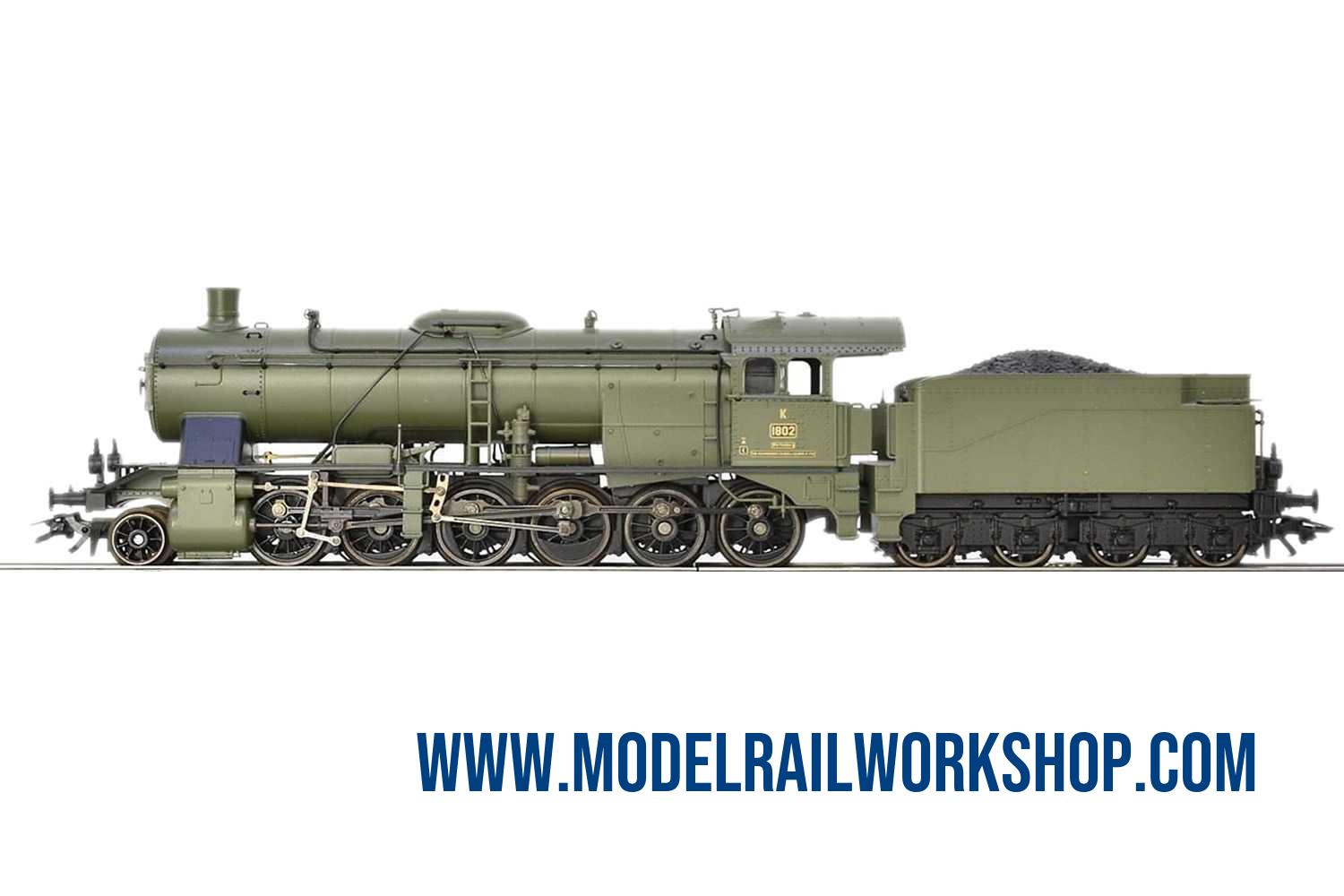
| KEY DATA | |
|---|---|
| Product Name | 37055 Steam locomotive with tender - BR59 |
| Object type | Locomotive-Steam with tender |
| Product Line | Märklin Special Model |
| Era | 1835-1925 (I) |
| Manufactured years | 2005-2006 |
| Text on object | K |
| Number on object | 1802 |
| Classification | BR59 |
| Type of housing | Metal |
| Length | 23.5 cm |
| Technology | Digital MFX |
| Railway company | DE-K.W.St.E. Die koniglich Wurttemberg Staatsbahn |
| Märklin RRP (Year) | 499€ (2006) |
| Url to Märklin | Klick to GoTo www.maerklin.de |
| Description | |
|---|---|